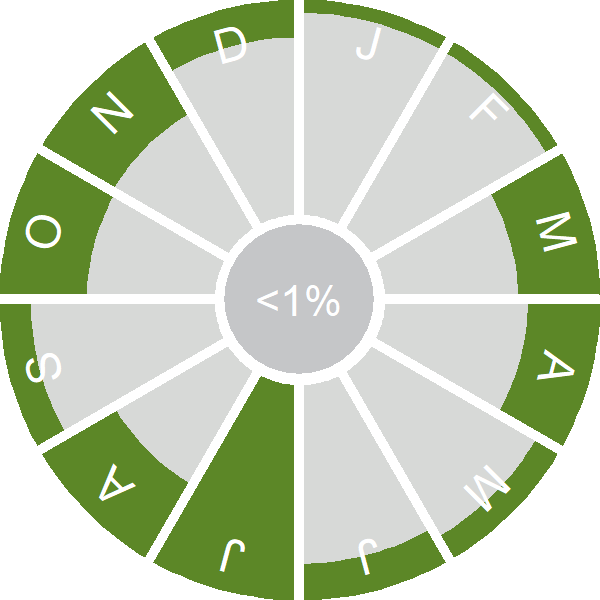White-winged Scoter
Introduction
Until recently considered a subspecies of Velvet Scoter, this seaduck breeds in eastern Canada and is a very rare visitor to Britain & Ireland.
This large scoter has a distinctive white wing patch. Viewed at a distance, White-winged Scoter can be separated from Surf Scoter by its more sloping head shape and white in the wing.
Key Stats
Status and Trends
Conservation Status
Population Size
Population Change
Population trends of this scarce species are not routinely monitored.
Distribution
This vagrant is too rarely reported to map distribution.
Distribution Change
This vagrant is too rarely reported to map distribution change.
Seasonality
White-winged Scoter is a very rare vagrant and most records relate to a few returning individuals.
Weekly pattern of occurrence
The graph shows when the species is present in the UK, with taller bars indicating a higher likelihood of encountering the species in appropriate regions and habitats.

Movement
Britain & Ireland movement
Biology
Survival and Longevity
Survival is shown as the proportion of birds surviving from one year to the next and is derived from bird ringing data. It can also be used to estimate how long birds typically live.
Classification, names and codes
Classification and Codes
- Order: Anseriformes
- Family: Anatidae
- Scientific name: Melanitta deglandi
- Authority: Bonaparte, 1850
- BTO 2-letter code: VD
- BTO 5-letter code: WHWSC
- Euring code number: 2152
Alternate species names
- Danish: Amerikansk Fløjlsand
- Dutch: Pacifische Grote Zee-eend
- French: Macreuse à ailes blanches
- German: Höckersamtente
- Hungarian: tükrös réce
- Icelandic: Kolönd
- Italian: Orco marino del Pacifico
- Latvian: Deglana pile
- Lithuanian: amerikine nuodegule
- Norwegian: Knoppsjøorre
- Polish: uhla garbonosa
- Portuguese: negrola-d'asa-branca-americana
- Slovak: turpan nosorohý
- Spanish: Negrón aliblanco
- Swedish: knölsvärta

